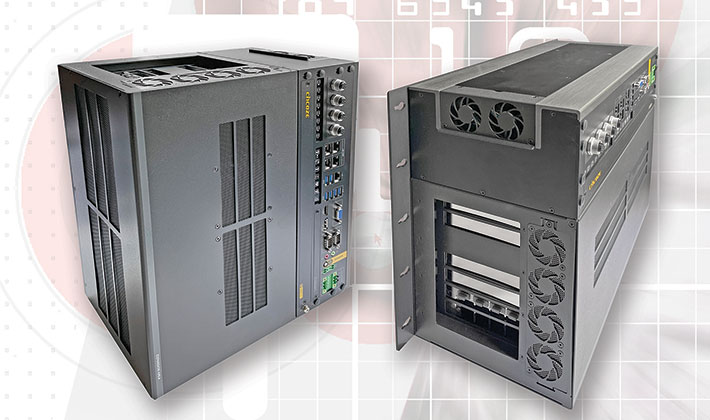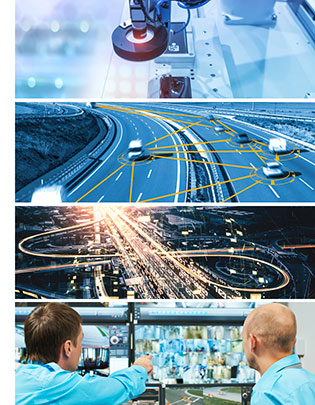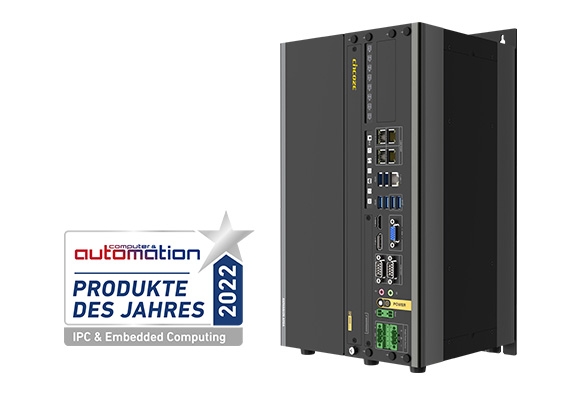Very high performance modular and expandable GPU computer that can handle, cool and power up to two 250 watt full-length, high-end graphic cards
In this report we're looking at a special type of computer, an industrial grade box PC with the room and cooling capabilities to accommodate very high-powered, high-end graphics cards. We're not talking the common "discrete" graphics cards and modules that are available to add more graphics processing power to desktops and laptops. This is about the highest-end GPU cards that can boost certain graphics processing tasks not just by 30 or 50% but by orders of magnitude. There is an increasing number of applications that require such specialized processing power, and Cincoze offers a modular platform that can handle all this with their new GP-3000.

Cincoze calls their GP-3000 an industrial AI and machine vision computer. In the excellent GP-3000 manual, the platform is referred to as their flagship GPU edge computing system. The GP-3000 is all that, and more. It's a flexible, expandable and highly configurable system that can be ordered with no fewer than 20 different Intel CPUs and has support for up to two of the most powerful full-size industry standard graphics cards money can buy. If the Cincoze GP-3000 were a car, it'd be a design that's ready on the showroom to have as much power under the hood and go as fast as you wanted, safely and reliably, without any other modifications.
Uses of a high-end GPU PC like the Cincoze GP-3000
Like any other general purpose computer, industrial Box PCs have almost limitless application potential. Like desktop PCs, their BIOS and system boards are very highly configurable. Unlike standard PCs, industrial computers are ruggedized to withstand wider temperature ranges, impact, vibration and industry-specific hazards. The Cincoze GP-3000 is all of the above, and it is more: it can support more graphics processing power than any desktop or laptop and also more than the vast majority of industrial PCs. What are the target markets for such a machine?
Machine Vision — Machine vision refers to the use of high-speed cameras to monitor production processes, have machines analyze the captured data in real-time, and then use the results to flag items, initiate or change actions, or report results for further action.
Application areas are vision-guided robotics, automated optical inspection, artificial intelligence and more.
In-vehicle Computing — High-end processing performance in conjunction with high-end graphics processing are required for autonomous driving applications, predictive maintenance monitoring, driver fatigue detection, etc.
Intelligent Transportation — This refers to advancing transportation safety and mobility and enhance productivity by integrating advanced technologies into transportation infrastructures and vehicles.
Intelligent transportation also includes monitoring traffic patterns, environmental conditions as well as object screening, all to optimize the flow of traffic and make it safer.
Security and Surveillance — This includes monitoring and recognition technologies far exceeding simple static recording. Object detection and tracking, real-time position determination and advanced video analytics bring security and surveillance to a new level.

